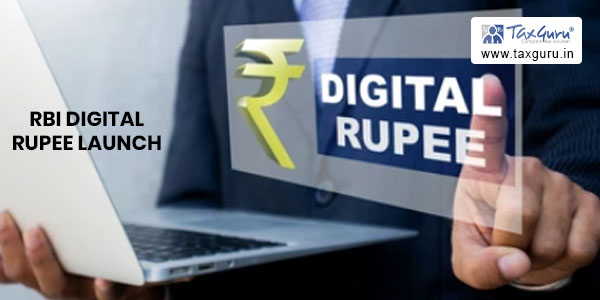RBI Digital Rupee launch
The Reserve Bank of India (RBI) started a pilot program of its digital currency, for retail users from December 1, 2022. CBDC-R or retail e-rupee launch comes after almost a month since the wholesale e-rupee launch.
What is the Retail digital rupee?
As per RBI, CBDC is the legal tender issued by a Central Bank in a digital form. It is the same as a fiat currency and freely convertible against the physical currency already in circulation. One of the major differences between CBDCs and physical currency is that the former will have an infinite life as it cannot be damaged or lost in any physical form.
Who can use Retail CBDC?
RBI’s retail e-rupee in its first phase will be initially introduced in four major cities, including Mumbai and Delhi, Bengaluru, and Bhubaneswar. Four banks will be involved in the controlled launch of the digital currency in these four cities: State Bank of India, ICICI Bank, Yes Bank, and IDFC First Bank. Subsequently the service will be extended to other cities & banks.
Operationalization of Central Bank Digital Currency – Retail (e₹-R) Pilot
The pilot would cover select locations in closed user group (CUG) comprising participating customers and merchants. The e₹-R would be in the form of a digital token that represents legal tender. It would be issued in the same denominations that paper currency and coins are currently issued. It would be distributed through intermediaries, i.e., banks. Users will be able to transact with e₹-R through a digital wallet offered by the participating banks and stored on mobile phones / devices.
Transactions can be both Person to Person (P2P) and Person to Merchant (P2M). Payments to merchants can be made using QR codes displayed at merchant locations.
The pilot will test the robustness of the entire process of digital rupee creation, distribution and retail usage in real time. Different features and applications of the e₹-R token and architecture will be tested in future pilots, based on the learnings from this pilot.

What is the need for Retail CBDC?
1. To reduce the operational cost in managing physical cash & bring efficiency in payment systems
2. To boost innovations in cross-border payments
3. To manage the concerns over money laundering, tax evasion with private crypto currencies like Bitcoin, Ether etc
CBDC – The disadvantages!
1. Money kept as CBDC will not earn any interest
2. CBDC seems to be a measure of centralization where major control is taken away from intermediary banks & it destroys the credit lending power of private banks
3. CBDCs have the ability to accumulate sensitive user and payment data as it is a part of the web, it can easily be used to spy on private transactions, secure sensitive details and also indulge in cyber crimes.
Frequently asked questions – RBI’s e-rupee/CBDC vs Crypto Currency and UPI
The major difference between CBDCs and crypto currency is that the former is backed by a central bank, while the latter is considered like private money that is not backed by any sovereign entity. However, there is not much difference in terms of payments as in both CBDC and crypto, payment settlement happens instantaneously as money is programmable.
However as far as UPI transactions are concerned, the settlement of transactions happens on the backend between two banks.





